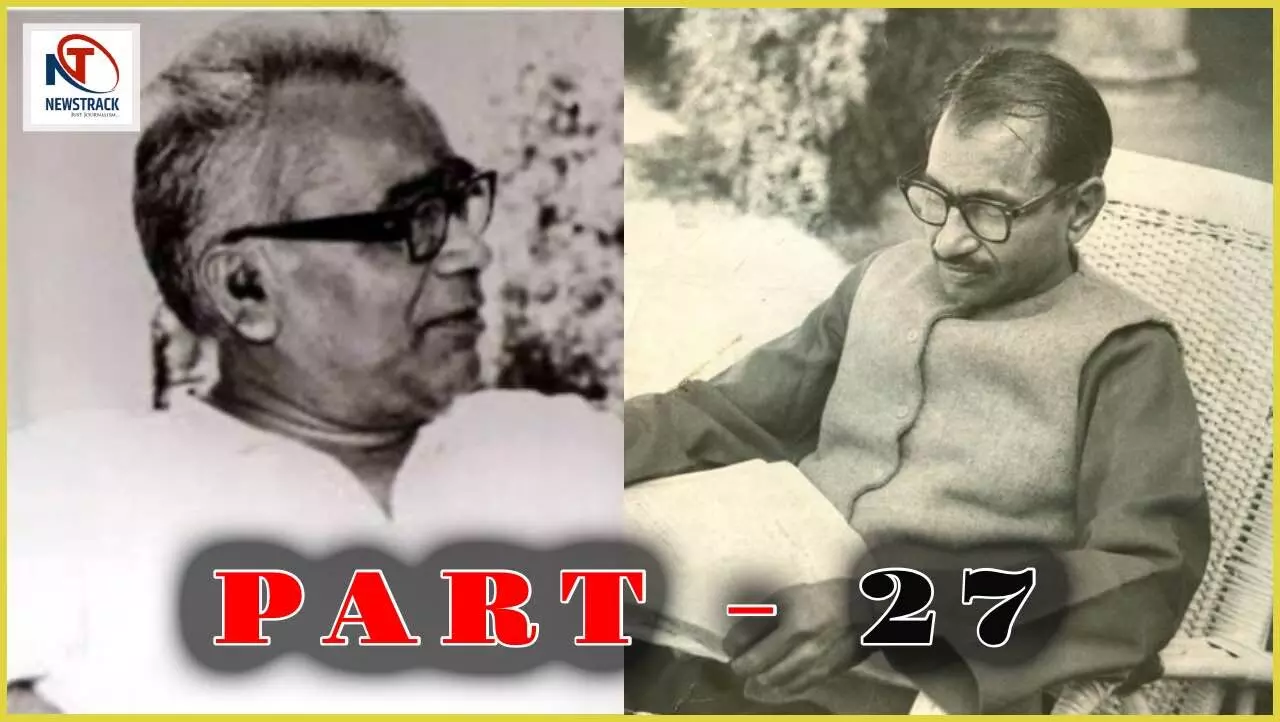TRENDING TAGS :
Book Part 27: Decentralization and Democracy – Power to the People
Ram Manohar Lohia and Deen Dayal Upadhyay Book Part 27: This chapter explores their call for decentralization as the soul of Indian democracy.
Ram Manohar Lohia and Deen Dayal Upadhyay Yogesh Mishra Book Part 27
Democracy is not truly democratic until power reaches the grassroots. Both Ram Manohar Lohia and Deendayal Upadhyay believed that centralization of power — whether political, economic, or administrative — alienates the people and weakens the nation. Their visions of true democracy involved a system where villages, communities, and local bodies held real authority. This chapter explores their call for decentralization as the soul of Indian democracy.
1. Lohia’s Four-Pillar State
Lohia proposed the concept of “Chaukhambha Raj” or the Four-Pillar State, comprising:
- Village (gram)
- District (zilla)
- Province (rajya)
- Nation (rasht̩ra)
He argued that governance must begin from below, not above, ensuring:
- People’s participation in local decision-making
- Reduced dependence on distant bureaucracies
- Autonomy in planning, budgeting, and development
His model sought to break the colonial administrative pyramid and replace it with horizontal empowerment.
2. Upadhyay’s Vision of Gram Swaraj
Upadhyay drew inspiration from Gandhi’s Gram Swaraj, enriching it with his own cultural and dharmic framework:
- Village is not just a unit of economy, but of culture and morality
- Local self-governance is essential for national self-reliance
- Power should rest in local assemblies (panchayats)
- Village economy must be self-sufficient and spiritually guided
For Upadhyay, decentralization was not just structural — it was civilizational.
3. Against Bureaucratic Centralism
Lohia criticized New Delhi-centric governance, where policies were made without understanding village life.
Upadhyay warned that centralization leads to bureaucratic arrogance and moral disconnection.
Convergence: Both demanded local control, participatory democracy, and cultural autonomy.
4. Political and Economic Decentralization
Lohia emphasized that economic planning should happen at the district and block level, with community ownership of resources.
Upadhyay insisted that development must align with local needs, customs, and ecology — resisting cookie-cutter models from the top.
They both supported cooperatives, local enterprises, and panchayat-led planning.
5. Contemporary Crisis and their Relevance
Despite constitutional provisions like the 73rd and 74th Amendments:
- Many panchayats remain powerless or co-opted
- Funds and authority are controlled from state capitals or Delhi
- Urban planning ignores community voices
Lohia and Upadhyay’s decentralization remains a radical and relevant solution — offering democracy not just in form, but in function.
Conclusion
Ram Manohar Lohia and Deendayal Upadhyay both envisioned an India where power lives with the people — not visits them every five years. While Lohia attacked centralism with socialist zeal, Upadhyay rebuilt local autonomy with dharmic faith. Their shared dream was of a bottom-up democracy, where every village is a republic, every citizen a stakeholder. In their model lies the promise of a strong India — not through control, but through trust.


